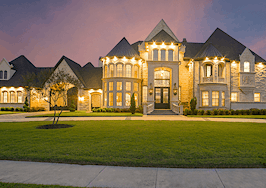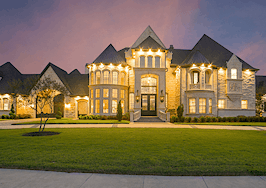Chadwick Ciocci, a Greenwich, Connecticut-based real estate agent, was encouraged when The Wall Street Journal, The New York Times and the Architectural Digest all came clamoring to feature in their pages one of his marquee listings, a sprawling $14.9 million, cliffside home on the privately owned Petra Island, in Mahopac, New York.
Conceived by Frank Lloyd Wright but completed and updated by architect Thomas Heinz for the 21st century, the 6,000-square-foot main property, which features a cantilevered deck over Lake Mahopac, is reminiscent of Frank Lloyd Wright’s famed Fallingwater in Pennsylvania and also includes a 68-year-old guest cottage designed by the legendary architect. Still, after nearly 300 days on the market, the luxury property has no takers.
“This property has had so much coverage,” said Ciocci, the chief executive of Chilton & Chadwick Global Real Estate Concierge, an affiliate of the Kinard Realty Group in Connecticut. “If someone was looking for a major Frank Lloyd Wright property, they would have bought it.”
Completed in 2007 for the current owner, a sheet metal contractor named Joseph Massaro, the property endured controversy after the Frank Lloyd Wright Foundation rejected the authenticity of the design, prompting a lawsuit against the property owner after he went forward with the project as rendered by Heinz, a Wright historian. Philip Allsopp, chief executive of the Frank Lloyd Wright Foundation, said of the property at the time, “It’s not a Frank Lloyd Wright house because it hasn’t been certified by the foundation.”
The foundation is visiting the property again soon, Ciocci said, and he is hopeful of a change of heart. Massaro attempted to sell the island property himself six years ago, asking close to $20 million for it, but it failed to attract a buyer.
The main elements Massaro altered from the original Frank Lloyd Wright design are the addition of a helipad atop the property and a decision not to embed the island’s natural rock formation into the walls, which would have violated New York state building code, Ciocci told Inman. Other changes such as the skylights being domed rather than flat have been mentioned in the architectural press.
With interest waning in the property, Ciocci has repositioned the 11-acre island as a corporate retreat. Just a 15-minute helicopter ride from Manhattan, the island, he said, could be a major draw for corporate titans in New York and Connecticut, and he plans to approach West Coast companies to spread the word. The Frank Lloyd Wright-designed guest cottage will be refashioned as a spa and yoga studio for corporate executives, he said, who can come to relax and exercise there or have a drink at a juice bar and get a massage.
And with his background in real estate development, Ciocci has persuaded Massaro to fix up the Japanese tea house on the island.
“We are embracing the island retreat lifestyle,” said Ciocci, who said the island could also serve as a family retreat. The decor of the main home will be staged in a lighter, brighter way rather than the more masculine, dark style favored by the Frank Lloyd Wright aesthetic. Various activities will be set up when buyers come to view the island — archery and bocce will be on offer — and the island will soon be relandscaped. The team CEO added he was also working with several major New York sports teams to hold a charity gala at the home.
“We were competing against Sotheby’s,” said Ciocci of his 2-year-old team’s winning pitch to gain control of the listing. “It was a coup for us, our first major listing. We want to do right by the owner and get the job done.”
“But the reality is, we have a willing seller,” Ciocci added. “We want to sell this.”








